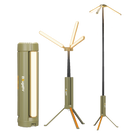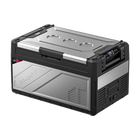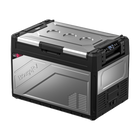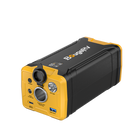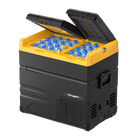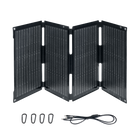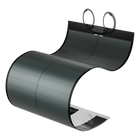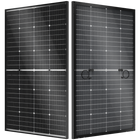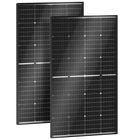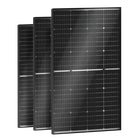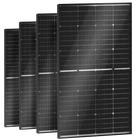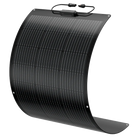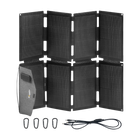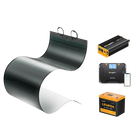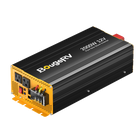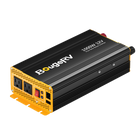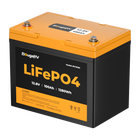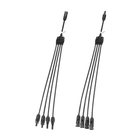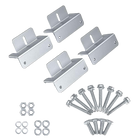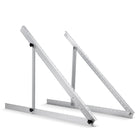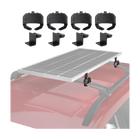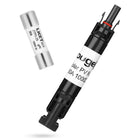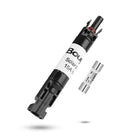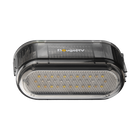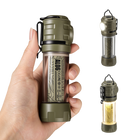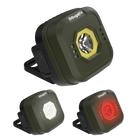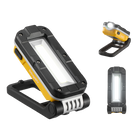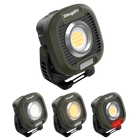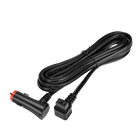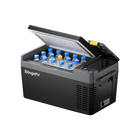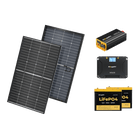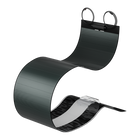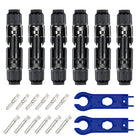Bifacial Solar Panels vs. Monocrystalline: Which Is Better?

In this comprehensive guide, we'll delve into the intricacies of bifacial and monocrystalline solar panels to help you make an informed decision about which technology is best suited for your needs.
What Are Monocrystalline Solar Panels?

Monocrystalline solar panels are among the oldest and most commonly used types of solar panels. They are made from a single continuous crystal structure, typically silicon, which gives them their name. These panels are known for their high efficiency and sleek black appearance.
Key Features:
- High Efficiency: Monocrystalline solar panels offer some of the highest efficiency rates, often exceeding 20%.
- Longevity: These solar panels generally come with a long lifespan, often 25-30 years, due to their durability.
- Aesthetics: Their uniform black color makes them visually appealing, especially for residential installations and RV roofs.
- Space-Efficiency: Due to their higher efficiency rates, fewer panels are needed to produce the same amount of electricity compared to other types.
Advantages:
- Proven Technology: Monocrystalline panels have been around for decades and have a proven track record.
- High Efficiency: They are among the most efficient solar panels available, making them ideal for areas with limited space.
- Durability: These panels are built to last and often come with extensive warranties.
- Better Performance in Low Light: They perform well even on cloudy days or in low-light conditions.
Disadvantages:
Bifacial solar panels are generally more expensive than other monofacial monocrystalline solar panels.
What Are Bifacial Solar Panels?
Bifacial solar panels are a newer innovation in the solar industry. Unlike traditional monocrystalline solar panels that capture sunlight only from the front, bifacial panels can capture sunlight from both sides. This dual-sided design allows them to generate more electricity from the same amount of sunlight.
Key Features:
- Dual-Sided Solar Cells: Bifacial panels capture sunlight from both the front and back surfaces.
- Higher Energy Yield: By utilizing reflected light from surfaces like the ground or nearby structures, these panels can produce up to 30% more electricity than traditional panels.
- Versatility: Suitable for various installations, including ground-mounted systems, rooftops, and solar farms.
- Durability: Made with robust materials to withstand environmental factors, ensuring long-term performance.
Advantages:
- Increased Energy Output: The ability to capture sunlight from both sides significantly boosts energy production.
- Versatile Installation Options: They can be installed in various orientations and locations, including vertical installations, which are not feasible with traditional panels.
- Reduced Need for Space: Higher efficiency means fewer panels are required to achieve the same energy output.
- Aesthetic Flexibility: Transparent backsheets make them less visually intrusive.
Disadvantages:
- Higher Initial Cost: Bifacial panels are generally more expensive upfront compared to monocrystalline panels.
- Complex Installation: Installation can be more complicated and may require specialized mounting systems.
- Performance Dependent on Environment: They perform best when there is an ample reflective surface beneath them, which may not always be possible.
What’s the Difference Between Bifacial Solar Panels vs. Monocrystalline?

1. Efficiency
When it comes to efficiency, both monocrystalline and bifacial panels have their strengths. Monocrystalline solar panel efficiency rates are around 15-20%, with some high-efficiency models exceeding 22%. They are also suitable for areas with less consistent sunlight.
On the other hand, the front-side efficiencies of bifacial solar panels are comparable to those of monocrystalline panels (15-20%). However, bifacial solar panels' total efficiency can be up to 30% higher due to additional backside generation. Moreover, bifacial solar panels can capture ambient light from multiple angles.
2. Cost
Cost is a significant factor when deciding between monocrystalline and bifacial solar panels. Both the initial investment and long-term savings need to be considered.
The price of monocrystalline solar panels is higher than polycrystalline solar panels but lower than bifacial panels. Bifacial solar panels are typically more expensive due to advanced technology and materials. However, bifacial solar panels offer potentially higher returns due to increased energy output, leading to greater savings on electricity bills over time.
3. Maintenance
Monofacial solar panels generally require low maintenance, adding to long-term cost savings. Bifacial solar panels require slightly more complex maintenance due to their dual-sided nature but still remain relatively low maintenance overall.
4. Installation
Monocrystalline Installation:
- Flexibility: Can be installed on rooftops, ground mounts, and even as part of building-integrated photovoltaics (BIPV).
- Ease of Installation: Standard installation processes make them widely accessible to most solar installers.
- Orientation and Tilt: Optimal performance when oriented southward at a specific tilt angle.
Bifacial Installation:
- Flexibility: Versatile installation options, including ground mounts, rooftops, and even as part of solar carports and fences.
- Complexity: This may require specialized mounting systems to maximize backside exposure to reflected light.
- Orientation and Tilt: Can benefit from vertical installations and varying angles to capture maximum reflected light.
5. Use Cases
Understanding where each panel type excels can help you determine the best fit for your specific situation.
Monocrystalline Use Cases:
- Residential Rooftops: Ideal for homeowners looking for high efficiency and a sleek appearance.
- Urban Areas: Suitable for installations with limited space where maximizing energy output per square foot is crucial.
- Off-Grid Systems: Reliable and efficient, making them a great choice for off-grid applications.
Bifacial Use Cases:
- Commercial Projects: Large-scale projects like solar farms and commercial rooftops can benefit greatly from the increased energy output.
- Ground-Mounted Systems: Perfect for open areas where ground reflectivity can be maximized.
- Innovative Installations: Suitable for unique applications like solar carports, fences, and canopies.
6. Future Trends
The solar industry is continually evolving, and both monocrystalline and bifacial technologies are likely to see advancements.
Monocrystalline Future Trends:
- Efficiency Improvements: Ongoing research aims to push efficiency rates even higher.
- Cost Reductions: Advances in manufacturing techniques may reduce production costs.
- Integration with Smart Technologies: Increased integration with smart home systems and energy storage solutions.
Bifacial Future Trends:
- Wider Adoption: As costs decrease and benefits become more widely recognized, bifacial panels are expected to gain market share.
- Technological Innovations: Continued advancements in materials and designs will enhance performance and versatility.
- Improved Mounting Systems: Development of more efficient and cost-effective mounting solutions to simplify installation.
Bifacial Solar Panels vs. Monocrystalline, Which Is Right for You?
Choosing between bifacial and monocrystalline solar panels depends on various factors, including budget, installation site, and energy needs.
Choose Monocrystalline Solar Panels If:
- You have limited space and need high-efficiency panels.
- You prioritize aesthetics and want a sleek, black design.
- You prefer a proven technology with a long track record.
Choose Bifacial Panels If:
- You want to maximize energy output and have suitable reflective surfaces.
- You are open to investing in newer technology with potentially higher returns.
- You have versatile installation options and aim to explore innovative solar applications.
Both bifacial and monocrystalline solar panels offer substantial benefits and can significantly reduce your energy bills while contributing to a greener planet. Evaluate your specific needs and consult with a reputable solar installer to find the best solution for your solar energy project.











